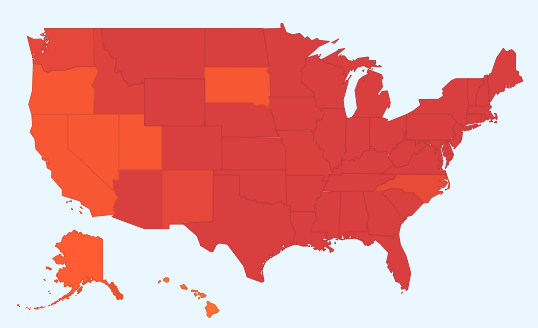Google Flu Trends Indicates High Sickness Levels Across U.S.
There are indications that flu cases are up this year—as anyone who’s spent time on a bus or subway filled with coughing people can gladly attest. And Google is doing its best to monitor the spread via Google Flu Trends, which crunches millions of flu-related search queries in hopes of mapping the spread. Right now, the Google Flu Trends’ map of the United States, hosted on Google.org, shows “intense” or “high” levels of flu activity in virtually all of the country. Maybe it’s time to invest in a few bottles of hand sanitizer and cough syrup. “We have found a close relationship between how many people search for flu-related topics and how many people actually have flu symptoms,” read the explanatory note on Google.org. “Of course, not every person who searches for ‘flu’ is actually sick, but a pattern emerges when all the flu-related search queries are added together.” Google researchers compared its flu-related query counts with “traditional flu surveillance systems” and found that the former tended to spike during flu season. By counting the frequency of the queries, Google can estimate the rates of infection in different countries and regions around the world. Google argues that its ability to rapidly update its data, and offer a global perspective on the spread of infection, makes its system an ideal complement to traditional flu surveillance: “Most health agencies focus on a single country or region and only update their estimates once per week.” In theory, a continuously updated dataset about the flu’s spread could help public health officials and scientists to anticipate flu season in a more effective way; at the extreme end of all hypothetical scenarios, that data could help them deal with an outright pandemic, similar to the 1918 influenza outbreak that killed millions of people around the world. On the privacy front, Google claims that the Google Flu Trends algorithms rely on millions of search queries over time, aggregated and stripped of any data that could identify an individual user. Google has been pursuing flu trends for some time. Back in 2009, it introduced a Mexico-specific version of Google Flu Trends in response to a possible pandemic in that country. At the time, Google engineers declared the platform “very experimental” but nonetheless felt it could give insight into the spread of disease. Image: Google


